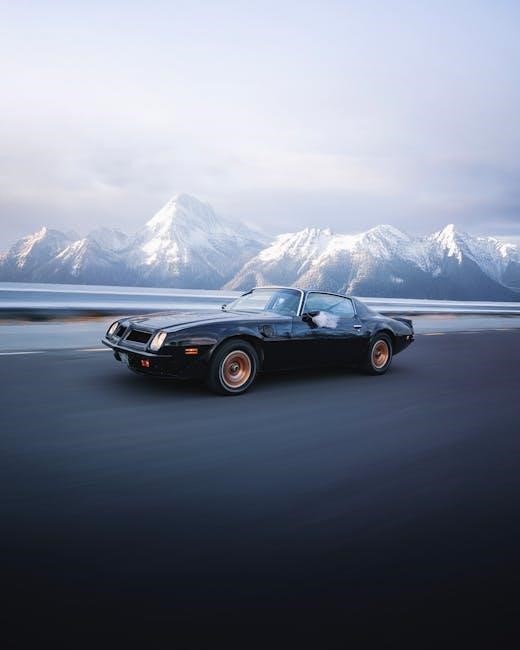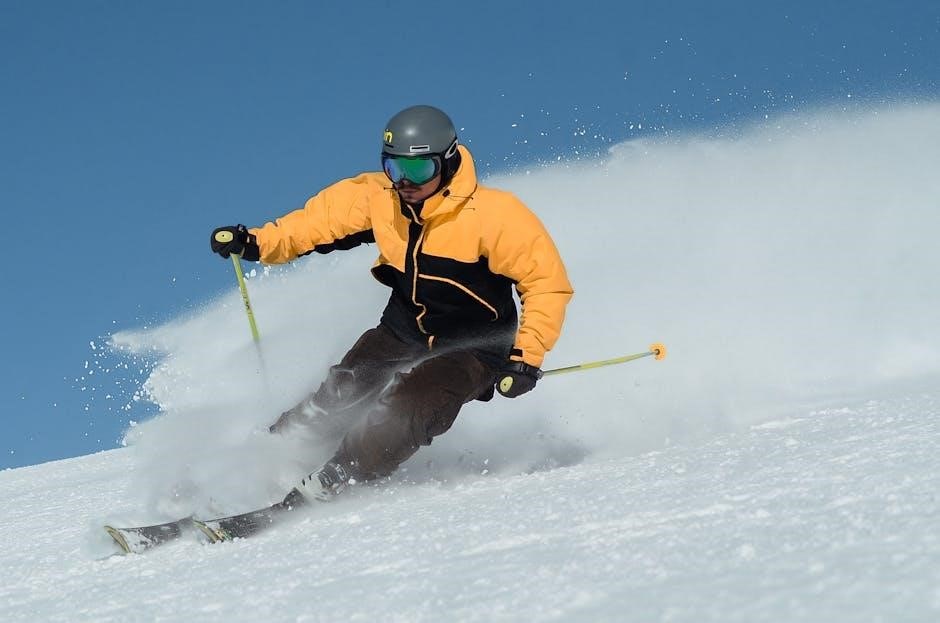
Selecting the right snowboard is crucial for an optimal riding experience. This guide covers key factors like size, shape, and flex to help you choose the perfect board for your riding style and preferences.
Why Choosing the Right Snowboard Matters
Choosing the right snowboard is essential for maximizing performance, comfort, and safety on the slopes. A snowboard that matches your riding style, weight, and skill level ensures better control and maneuverability. The wrong size or flex can lead to fatigue and difficulty in handling the board, while the right one enhances responsiveness and confidence. Whether you’re carving through groomed trails or exploring backcountry terrain, a well-suited snowboard tailored to your needs will elevate your overall experience. Additionally, proper fit and construction materials impact durability and performance, making it crucial to invest time in selecting the ideal board. This guide helps you navigate the key factors to find the perfect snowboard for your adventures.

Key Factors to Consider When Buying a Snowboard
Key factors include size, shape, flex, and snowboard type, ensuring the right fit and performance for your riding style and terrain preferences.
Snowboard Size and Weight Recommendations
Snowboard size and weight are critical for optimal performance. The right size ensures proper control and stability, while weight affects responsiveness and maneuverability. Most snowboards range from 140cm to 160cm, with sizing charts available to match your height and weight. Lighter boards are easier to handle, especially for beginners, while heavier boards offer stability at higher speeds. Your weight plays a significant role, as it impacts how the board flexes and responds. For first-time buyers, consulting a sizing chart or seeking advice from experts can help you find the perfect fit. Proper sizing ensures a better riding experience, making it essential to prioritize this factor when selecting your snowboard.
Understanding Snowboard Shape and Width
Snowboard shape and width significantly influence performance and suitability for different terrains. The most common shapes are directional, twin, and directional twin. Directional boards are designed for all-mountain riding, offering better float in powder and stability at high speeds. Twin boards are symmetric, ideal for freestyle and park riding, enabling easy tricks and switches. Directional twin boards combine the best of both worlds, offering versatility for various riding styles. Width is also crucial, as it must accommodate your boot size to prevent drag and ensure proper edge control. Wider boards are better for deep snow, while narrower boards excel in tighter spaces and tricks. Matching the shape and width to your riding style and boot size ensures a more enjoyable and efficient experience on the slopes.
Flex Rating: How Flex Affects Performance
The flex rating of a snowboard determines its stiffness, which directly impacts performance. A softer flex is ideal for beginners and freestyle riders, offering easier maneuverability and forgiveness. Medium flex provides all-mountain versatility, balancing stability and playfulness. Stiffer boards are designed for advanced riders, delivering precise control and edge hold at high speeds. The right flex ensures optimal performance, as it allows the board to respond effectively to your movements. Riders should consider their weight, skill level, and riding style when selecting a flex rating. Proper flex ensures better absorption of vibrations, improved edge control, and enhanced overall responsiveness. Matching your flex rating to your needs maximizes your snowboarding experience, making every run more enjoyable and efficient. Always test the flex if possible to ensure it aligns with your preferences and riding conditions.

Different Types of Snowboards
Snowboards vary in design to suit specific riding styles, including All Mountain, Freeride, Freestyle, and Powder boards, each tailored for unique terrain and performance preferences.
All Mountain Snowboards: Versatility for All Terrains
All Mountain snowboards are designed for versatility, offering exceptional performance across various terrains. These boards are ideal for riders who explore diverse landscapes, from groomed trails to backcountry adventures. With a medium flex rating, they provide stability at high speeds while remaining maneuverable in tighter spaces. Their directional shape enhances float in powder and control on hardpack, making them suitable for both beginners and experienced riders. All Mountain boards often feature a hybrid camber profile, blending pop and forgiveness. They are a great choice for those seeking a balanced ride without compromising on adaptability. Whether carving through groomers or venturing into untouched snow, All Mountain snowboards deliver consistent performance and reliability, making them a popular option for all-around enthusiasts.
Freeride Snowboards: Designed for Backcountry Adventures
Freeride snowboards are built for backcountry adventures, offering unmatched performance in deep snow and challenging terrains. These boards typically feature a directional shape with a longer nose and shorter tail, enhancing float in powder. A stiffer flex rating provides stability at high speeds and better control in uneven terrain. Many Freeride boards incorporate rocker profiles in the nose for improved buoyancy, while camber underfoot delivers precision and edge hold. They are ideal for experienced riders seeking to explore remote areas and tackle steep lines. Durable construction and lightweight materials are common, ensuring reliability in harsh conditions. Freeride snowboards are the perfect choice for those who prioritize untracked snow and thrilling descents, making them a top option for backcountry enthusiasts.
Freestyle Snowboards: Built for Park and Tricks
Freestyle snowboards are specifically designed for park and trick riding, offering a playful and responsive feel. These boards are lightweight and feature a symmetrical or near-symmetrical shape, allowing for effortless switch riding and precision in the park. A medium-soft flex rating makes them easy to maneuver and ideal for jibbing, rail tricks, and airborne maneuvers. Freestyle boards often include a true twin camber or a hybrid camber-rocker profile, providing a balanced mix of pop and forgiveness. They are equipped with durable edges and bases to withstand the rigors of park riding. Whether you’re hitting rails, boxes, or jumps, freestyle snowboards deliver the performance and creativity needed for technical tricks. They are perfect for riders who prioritize park performance and are looking to push their freestyle skills to the next level.
Powder Snowboards: Specialized for Deep Snow
Powder snowboards are designed for tackling deep, untouched snow, offering exceptional floatation and stability in backcountry conditions. These boards typically feature a wider nose and a tapered tail, allowing them to glide effortlessly through powder. A rocker profile or hybrid camber is common, enhancing buoyancy and reducing the effort required to stay afloat. Powder snowboards often have a longer length and a setback stance, further improving floatation and control. They are lightweight to make traversing and hiking easier, with a medium to stiff flex for responsiveness at high speeds. Key features include a directional shape and a sintered base for durability and speed. These boards are ideal for riders who prioritize exploring untouched terrain and immersive backcountry experiences, delivering unparalleled performance in deep snow conditions.

Snowboard Construction and Features
Snowboard construction involves core materials, camber profiles, and base types, each affecting performance, durability, and speed for specific riding styles and conditions.
Core Materials and Their Impact on Performance
The core of a snowboard is its backbone, determining flexibility, pop, and overall responsiveness. Common core materials include wood, foam, and composite materials. Wood cores, such as poplar or aspen, are popular for their durability and consistent flex. Foam cores are lighter but less durable, often used in entry-level boards. Composite cores blend materials for specific performance traits. The choice of core material significantly impacts the board’s ability to handle various terrains and riding styles, making it a critical factor in selecting the right snowboard for your needs.
Camber vs. Rocker: Understanding Profile Types
Camber and rocker are two primary profile types in snowboards, each offering distinct performance benefits. Camber, the traditional choice, features an upward curve at the center, providing excellent edge hold, stability, and pop. It excels on groomed trails and in freestyle settings. Rocker, or reverse camber, has a downward curve, allowing for easier turns, better float in powder, and smoother landings. Hybrid profiles combine both, offering versatility across different terrains. Choosing the right profile depends on your riding style and preferred terrain, ensuring optimal performance and control on the slopes.
Base Types: Extruded vs. Sintered
Snowboard bases are categorized into two main types: extruded and sintered. Extruded bases are created by melting plastic into a thin, consistent layer, offering durability and ease of maintenance. They are ideal for beginners or casual riders, as they require less waxing and are more forgiving. Sintered bases, however, are made by compressing plastic particles into a porous structure, allowing for better wax absorption and superior glide on snow. These bases are faster and perform well in cold conditions but require more maintenance, including regular waxing. The choice between extruded and sintered depends on your riding style, budget, and how much time you’re willing to spend on upkeep. Sintered bases are preferred by advanced riders for their performance benefits, while extruded bases are a practical choice for those prioritizing simplicity and durability.

Budget and Investment Tips
Set a budget and balance quality with cost. Entry-level boards start around $300, while high-performance models can exceed $1,000. Invest wisely based on your riding frequency and goals.
Price Ranges and What to Expect
Snowboard prices vary widely based on quality, technology, and brand. Entry-level boards typically range from $300 to $500, offering basic features for beginners. Mid-range boards, priced between $500 and $800, provide better performance and durability, making them a great choice for casual riders. High-end models, costing $800 to $1,200 or more, feature advanced materials and innovative designs for serious enthusiasts. Additionally, consider the cost of bindings, boots, and other gear when budgeting. While higher-priced boards offer superior performance, they may not be necessary for those just starting out. Always balance your budget with your riding style and frequency to ensure the best value for your investment.
Tips for First-Time Buyers
For first-time buyers, selecting the right snowboard can be overwhelming, but a few key tips can simplify the process. Start by considering your riding style, whether it’s all-mountain, freestyle, or powder, as this will guide your choice. Ensure the board size matches your height and weight for optimal control. Flex rating is also crucial; softer boards are easier to maneuver for beginners. Don’t hesitate to seek advice from knowledgeable staff at a local shop, as they can offer personalized recommendations. Renting a board for a few sessions can also provide insights into what you prefer. Lastly, remember that while higher-priced models offer advanced features, a mid-range board is often sufficient for learning the basics and improving your skills.